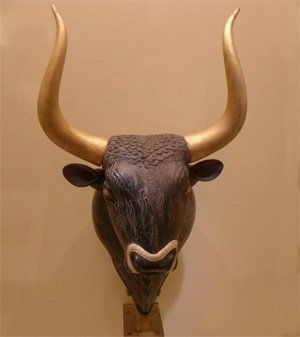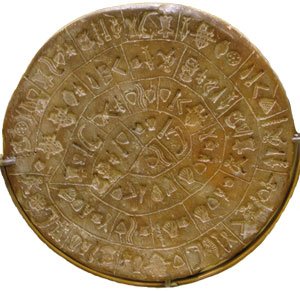You can’t go anywhere in the world of ancient Greece without running into legend, and Heraklion is no exception. It is supposed to take its name from Herakles (Roman Hercules). Herakles had to accomplish Twelve Labours, and one of them was to get control of the Cretan bull. This bull, at the instigation of the sea god Poseidon, was creating havoc in the kingdom of King Minos.
History of Heraklion
The Venetians had come to Crete in the 13th C AD, and under them the city, which they called Candia, became the commercial and political centre of Crete. Although the Venetians were good at generating trade, they were not liked by the Cretans as they imposed quite heavy taxes on the local population.
In 1648 the Turks invaded Crete, and it wasn’t until 1669 that they finally conquered the island. Under their rule Chania became the most important town, and it wasn’t until 1971 that Heraklion once again became the capital of the island.

The ancient town
Well, unfortunately, not much remains of any old parts of the city, mainly due to the ravages of WW2. It’s not the prettiest of places, but there are areas which are worth a visit. The old town which is contained within the old walls is of interest. When the Venetians ruled the island they built the extensive fortified wall for protection.
During the Minoan period the harbour at Heraklion served as the port for Knossos. One of the theories of why the Minoans went into decline proposes that a tsunami caused by the eruption of Santorini destroyed all the Minoan ships which were moored in harbours along the north Coast of Crete.
The Museum
The Museum at Heraklion is the second most important museum after the National Museum at Athens. It re-opened in the autumn of 2013 after several years of re-building. The complex houses a vast quantity of finds especially of the Minoan era.
Here are some of the famous finds you can see in the museum.
Bull’s Head Rhyton
A rhyton is a container for liquids, to be either drunk or poured out in a libation (offering).
This libation vessel is carved from a block of black steatite in the shape of a bull’s head. The eyes are inlaid with rock-crystal and jasper, the muzzle is inlaid with white shell (mother-of-pearl). The horns are restored, and were originally made from gilded wood.
This fine example of Minoan craftsmanship was discovered in the Little Palace at Knossos. It was made between the 17th-15th centuries BC.

Fresco
One of the frescos dating from the New Palace period.
Substantial areas of the frescos discovered in the palaces on Crete have had to be restored. Even so, they give a good idea of the sophistication and artistic skills of the Minoans.

The Phaistos Disc
This shows one side of the clay disc discovered at Phaistos (there are similar hieroglyphs on the reverse).
It’s one of the oldest objects where symbols were stamped onto a surface. Because no other records of this type have been found, there is not enough information for experts to decipher the text.
It is thought to be an object of religious origin, as it is more elaborate than other textural records, with the symbols spiraling out from the centre.

2021 Update: New theory connecting interpretation to Astarte, the goddess of love from what is now Syria. Therefore also associated with Acrocorinth temple of Aphrodite.